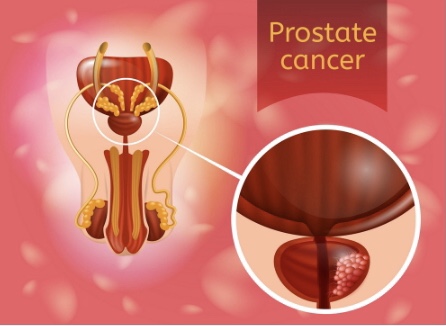The prostate is a walnut shaped gland in the pelvis, found in men that produces the thick white fluid that transports sperm . It is located between the penis and the bladder, and surrounds the urethra.
For reasons not yet understood, prostate cancer is more common in men of African-Caribbean or African descent, and less common in Asian men.
Types of Prostate cancer
Ductal adenocarcinoma
This starts in the cells that line the tubes of the prostate gland.
Acinar adenocarcinoma
These are cancers that develop in the gland cells that line the prostate gland. They are the most common form of prostate cancer.
Squamous cell cancer
They develop from the thin flat cells that cover the prostate. They tend to grow faster than adenocarcinoma of the prostate.
Small cell prostate cancer
It is a type of neuroendocrine cancer and is made up of small round cells. They tend to grow more quickly than the other types of prostate cancer.

Causes/risk factors of Prostate cancer
It is not exactly clear what causes prostate cancer. However, factors that can increase your risk of prostate cancer include:
Age:
The risk increases as men get older. It is more common in men aged over 50, though younger men can still develop it.
Race
Black men have a much higher risk of getting prostate cancer than white men. They also tend to get diagnosed in younger black men than white men.
Family link
There may be a possible inherited link from a close family member and the risk will be increased of getting prostate cancer.
Being overweight and diet
Being overweight and having a diet high in fats and sugar, eating processed foods can increase the risk of developing prostate cancer or advanced prostate cancer.
These symptoms should not be ignored, but they do not mean you have prostate cancer as they can mimic other conditions.

